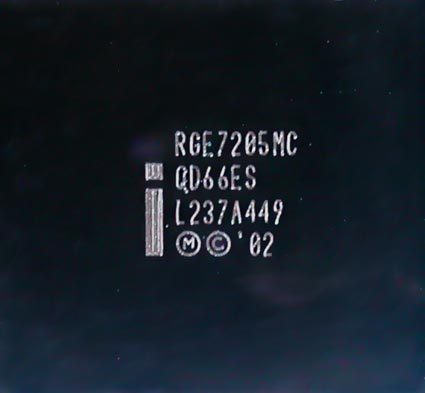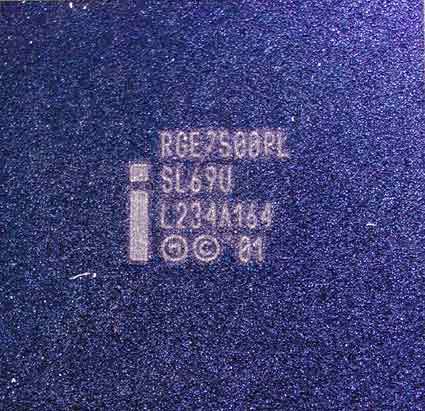Dual DDR For Pentium 4: Intel E7205 Chipset Put To The Test
Dual-Channel DDR: How It Differs From nForce2
Close-up of the E7205 die.
The design of the dual-channel memory interface is actually already familiar from the Rambus chipsets i840 (Carmel) and i850 (Tehama). NVIDIA was the first to seize on this principle and implement it in the nForce (Crush) and nForce2 (NV17) DDR-SDRAM chipsets. Now Intel completes the shift from Rambus to DDR SDRAM with regard to dual-channel technology. And yet another new twist from the memory makers: currently, no one at JEDEC is able to validate the DDR400 memory. Nor does it look any more hopeful with Rambus. The PC1200 RDRAM option would lead to a heat problem. This is why it would be advisable for Intel to switch to dual channel and to start at at least DDR266.
Let's compare the NVIDIA nForce2 memory interface with the E7205/ E7505 from Intel. NVIDIA supports DDR200 (100 MHz) up to DDR400 (200 MHz), while Intel only offers DDR200 to DDR266. The main difference is in the expansion options. NVIDIA limits the maximum number of memory slots on the motherboard to three. Intel, on the other hand, allows a maximum slot number of four on the motherboard. This means that an existing two-module configuration can easily be raised to four without limiting the dual-channel capability. The maximum expansion is 4 GB RAM.
Northbridge E7500 For Servers
Die of the E7505 server chipset. Pictured: Northbridge die
Unlike the "little" E7205, the E7500 supports Xeon processors with dual configuration. Even 8 GB registered ECC DDR SDRAM can be used on the Tyan S2722 shown in the test. But this comes at a price: Intel sells the E7505 chipset together with the ICH4 for $100. That drives motherboard prices up.
Get Tom's Hardware's best news and in-depth reviews, straight to your inbox.
Current page: Dual-Channel DDR: How It Differs From nForce2
Prev Page Introduction Next Page Piggybacked: ICH4 Southbridge

